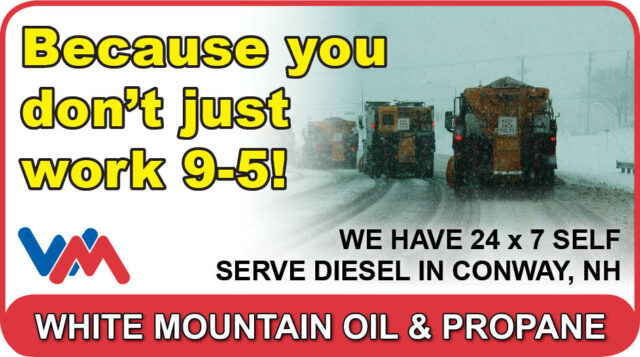History in the making for more than 83 years, White Mountain Oil & Propane has been in the fuel oil business since 1941.
We deliver premium #2 ultra-low sulfur heating oil, K-1 kerosene, diesel and gasoline products. Heating oil is widely used throughout New Hampshire and Maine as a primary energy source in homes and businesses. More than 59% of all homes in New Hampshire heat with oil, according to the Energy Marketers Association of New Hampshire.
Oil heat is a safe, dependable, economical and comfortable energy source. Research developments have allowed oil heat to conserve more energy over the years and provide clean-burn technology which makes oil heat the smart choice for consumers who heat their homes in northern New England.
K-1 Kerosene
Kerosene is used primarily in “Monitor-style” heaters such as Toyotomi and Laser brands and in mobile home furnaces as well as construction heaters. Kerosene may be used by any oil-burning piece of equipment but is especially required by certain types of heating equipment. K-1 kerosene (the type used in northern New England) is simply a more-refined level of heating oil. K-1 kerosene will not congeal during extremely cold temperatures and is often used in outdoor tanks. White Mountain Oil & Propane has been in the kerosene business since 1941.
Diesel
White Mountain Oil & Propane delivers premium blended Ultra Low Sulfur Diesel to farms and businesses within our service area. We also maintain an automatic 24-hour keyed diesel dispensing station in Conway NH for the use of our commercial and private customers. For more information on this retail diesel service, please contact us at (800) 600-4728 and press option "1".
"Off-Road" Diesel
Off-road diesel is the same quality as our regular blended Ultra Low Sulfur Diesel, except it is free from State and Federal road tax. Off-road is restricted for use in non-mobile pieces of equipment (generators, industrial machinery, etc.) or strict off-road use (such as logging equipment) and is delivered by us year-round.
Gasoline
White Mountain Oil & Propane delivers both 87 Octane and 90 Octane (ethanol free) gasoline products to residential and commercial accounts who have appropriate storage tanks for these products within our service area.

 A greener fuel for New Hampshire homes and local businesses.
A greener fuel for New Hampshire homes and local businesses.
 For more information on safe, dependable oil heat we recommend you visit:
For more information on safe, dependable oil heat we recommend you visit: